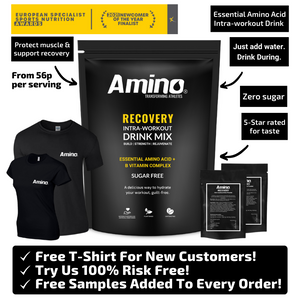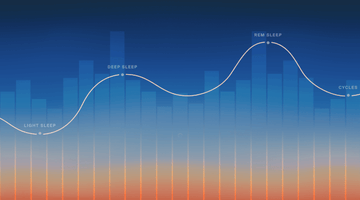Since you’re reading this you've probably already supplemented with, or are aware of the benefits of BCAAs (branched-chain amino acids) as part of your training, performance, and recovery.
However, what you might not know is that the most up to date scientific research shows that using just the 3 BCAA's is like fielding a football team with only 3 of your 11 players, even if those 3 players are really good.
BCAA’S ONLY GO SO FAR ALONE
BCAAs do a fantastic job at stimulating protein synthesis but the process is boosted when combined with the other essential amino acids (EAAs) to complete the recovery process. Basically, BCAAs work best in the presence of other EAAs; you need all 8 essential amino acids to repair muscle, not just the three branched-chain amino acids.
If you're curious about the science, check out the research and science behind Amino.
AMINO ACID’S…? EAA’S…? BCAA’S?… WHAT!!?
Confused with all this EAA and BCAA talk? Essentially, amino acids are the building blocks of protein. An essential amino acid (EAA) is an amino acid that cannot be synthesised by your body, and thus must be supplied in its diet. The 8 essential amino acids are phenylalanine, valine, threonine, tryptophan, methionine, leucine, isoleucine and lysine. 3 out of 8 essential amino acids are known as branched-chain amino acids (BCAAs). These are L-leucine, L-isoleucine and L-valine.
What is the difference between a BCAA and an EAA?
We often get asked this question. It is actually a bit of a trick question, as you can see from the graphic below. The 3 BCAAs (leucine, isoleucine and valine) are also 3 of the 8 EAAs. So all BCAAs are EAAs, but not all EAAs are BCAAs. Make sense?
Related: Top 10 benefits of EAAs

DO I NEED TO TAKE EAA’s?
EAAs (essential amino acids) are abundantly found in food because all proteins are made up of amino acids. It's important for all of us to get high-quality amino acids in our diet, through whole foods or supplements as this helps you maintain lean muscle mass, build more muscle if you are active and keep all of your organs and tissues healthy and functional.
Most protein-rich foods, such as lean poultry, lean red meats, dairy products, eggs, soy or other plant-based proteins have a high percentage of EAAs and therefore are consumed as part of a balanced diet.
Related: What are amino acids and why do you need them?
You might consider additional sources of EAAs, if...
- You exercise regularly. Amino acid supplements encourage muscle strength and power gains, better body composition and greater resistance to fatigue.
- You do any kind of fasting or are vegan. EAA supplements are an absolute consideration for optimising performance and preventing muscle loss.
- You have a particularly busy stressful lifestyle, injury or sickness. This can take its toll and your body. You may need some additional help through diet and EAA supplementation.
NOT ALL SOURCES OF EAAs ARE EQUAL
EAAs are abundantly found in protein-rich foods. However dietary protein still needs to be digested before it is accepted by the body.
Protein products like whey protein isolate absorb faster than dietary protein. However, free-form essential amino acids, like those in Amino Recovery, are the fastest way to absorb essential amino acids, making them a great way to deliver targeted benefits to our bodies.
Related: EAAs vs Whey Protein: Which one is right for me?

HOW TO USE EAAs
ENJOYED THIS ARTICLE?
Find out more about how EAA supplements can help to support a healthy lifestyle, plus get 10% off your first order.






